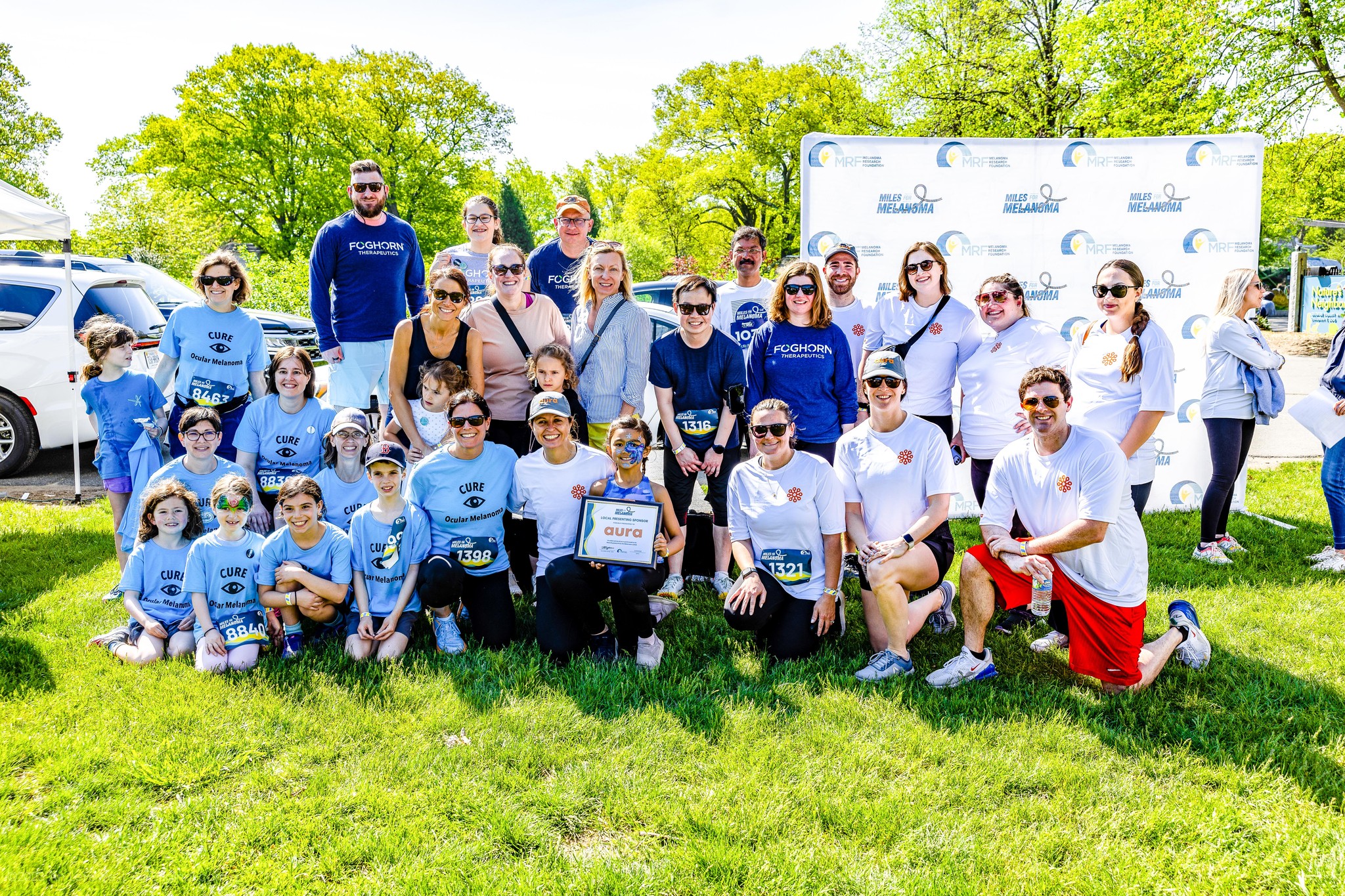A timeline of key scientific milestones that the Melanoma Research Foundation has achieved, in its drive to uncover new treatments for melanoma, gain traction for broader public awareness, and to build a thriving community of melanoma survivors and advocates.
Scientific Milestones of the MRF
Over the years, the Melanoma Research Foundation has achieved a number of important milestones in its drive to uncover new treatments for melanoma, gain traction for broader public awareness, and to build a thriving community of melanoma survivors and advocates. Below is a brief timeline highlighting key dates:
2018
- The MRF community successfully advocates for a $20 million increase in the Department of Defense Peer Reviewed Cancer Research Program (PRCRP). The PRCRP funds innovative basic, applied and translational research for cancers including melanoma. Since its inception, the PRCRP has funded over $250 million in innovative research for over a dozen cancer types. To date, melanoma researchers working as individuals and teams have been awarded over $50 million through the PRCRP competitive peer review process.
- The MRF’s CURE OM initiative offers a pilot proposal focused on GNAQ/11 Mutant Uveal Melanoma. Successful applications will emphasize novel, innovative research into the biology and/or therapeutic targeting of GNAQ/11 mutant uveal melanoma with a focus on GNAQ/11 mutations that involve amino acid change Q209L, as well as other variants of unknown significance (VUS), specifically S326A, among others.
- The MRF sponsors its second workshop on melanoma brain metastasis (MBM) in an effort to build upon the momentum of its first summit and the exciting potential of systemic therapy for MBM. A white paper summarizing the meeting is being developed.
- In furtherance of its commitment to advance melanoma science and support the most promising researchers at every stage of their careers, the MRF awards its largest number of Medical Student research grants (11) in a single year. With the generous support of donors, this program has funded 46 medical students to date.
2017
- The MRFBC, with the generous support of BMS, offers its first Young Investigator Translational Immuno-Oncology Team Science grant. The goals are to 1) help identify and support the next generation of translational investigators, 2) focus on improving clinical outcomes for patients with melanoma treated with immuno‐oncology agents and 3) advance the scientific understanding of immuno‐oncology and the role of the immune system in melanoma.
- The MRF’s CURE OM Initiative prepares to launch a national Patient Registry, the first patient-driven registry for ocular melanoma. As a preliminary step, a Patient Registry Working Group is assembled including OM researchers, clinicians, patients, caregivers and surviving family members.
2016
- The MRFBC partners to launch a 12-institution biomarker trial for patients with mucosal or acral lentiginous melanoma who will be treated with combination checkpoint inhibitor therapy. Biospecimens from patients will be collected in the Virtual Repository to support research that explores which patients will respond.
- As a result of the 2015 workshop on the state of melanoma, The state of melanoma: challenges and opportunities was published in the highly regarded journal, Pigment Cell & Melanoma Research.
- As a result of the 2015 workshop on brain metastasis, Melanoma central nervous system metastases: current approaches, challenges, and opportunities was published in the highly regarded journal, Pigment Cell & Melanoma Research. A lay summary of this publication is also available.
2015
- The MRF convened of summit of internationally renowned melanoma experts for an in-depth discussion on the current understanding of, and future recommendations for melanoma research.
- The MRF sponsors a workshop to accelerate advances in patients with brain metastasis, engaging experts from melanoma, other cancer types, and basic science.
- The MRFBC Virtual Repository disburses biospecimens from patients with BRAF mutant melanoma to three biomarker research projects.
2014
- The MRF expands it research grant program to include Team Awards. The MRF funds 22 scientists and six medical students across 17 institutions.
- The MRF launches initiatives focusing on pediatric melanoma and mucosal melanoma in an effort to provide much needed education, support and research funding to these rare forms of melanoma and the people who are affected by them.
- The MRF hosts the Inaugural Pediatric Melanoma Summit to address rising rates of melanoma among children, identify research issues and provide supportive resources to those impacted by the disease.
- The MRF partners with Clinical Care Options (CCO) to create a unique approach to patient and physician education. The two organizations co-hosted three educational symposia at which patients and healthcare providers learned about the latest developments in melanoma research. Continued Medical Education (CME) hours were offered.
- The MRF becomes a charter member of the PASS (Public Access to SunScreens) Coalition. The PASS Coalition is a multi-stakeholder coalition of public health organizations, dermatologists, sunscreen ingredient companies and concerned citizens who work collaboratively with the FDA, the White House and Congress to establish a timely and transparent framework for approval of the next generation of UV active filters for Over-the-Counter (OTC) sunscreens.
- The MRFBC partners to launch two clinical trials focused on targeted therapies for wild-type melanoma.
- CURE OM finalizes international consensus guidelines for assessment and treatment of patients with ocular melanoma, which will facilitate development of new therapies across clinical trials.
- CURE OM awards its fifth ocular melanoma research grant.
2013
- The MRF’s 3 research arms – SAC, MRFBC and CURE OM – develop consensus priorities of unmet needs in melanoma research to guide 2014 grant proposals.
- CURE OM partners with the National Cancer Institute (NCI) to host the second annual uveal melanoma-specific meeting at SMR.
- CURE OM initiates a successful international coalition to include uveal melanoma in The Cancer Genome Atlas’ (TCGA) rare tumor initiative and provide the needed 100 qualified specimens. The TCGA is a major initiative of the National Institutes of Health focused on identifying changes in each cancer’s genome which lays the foundation for developing personalized medicine.
- The MRFBC launches biospecimen Virtual Repository for clinical trials. Translational research will be accelerated with the specimen tracking system and virtual repository, operating under harmonized SOPs across MRFBC trials.
2012
- THe MRF supports awards for the best abstracts from young investigator researchers, which facilitates their participation in SMR’s annual meeting, the premier international scientific melanoma conference.
- The MRF expands its research program by 60%. 2012 marked a banner year for the MRF’s research program. It was the 15th year of providing research grants to junior and senior investigators, the second year of offering medical student awards and the first year of awarding a research grant specifically for ocular melanoma through our CURE OM initiative. These awards, paired with a $125,000 grant to Dr. Meenhard Herlyn at The Wistar Institute, and $500,000 in support of the MRFBC, put the MRF’s research program support at $1.5 million dollars.
- CURE OM awards its first two ocular melanoma research grants.
- CURE OM hosts the first multisector annual uveal melanoma-specific symposium as part of the annual SMR international scientific.
2011
- The MRF launches a new initiative, CURE OM, to improve the lives of people affected by ocular melanoma. CURE OM works to support and accelerate the development of effective treatments and, ultimately, a cure for ocular melanoma; improve the lives of people affected by ocular melanoma by creating systems and programs to provide education and support; and advocate for the ocular melanoma community.
- On October 3, 2011 MRFBC collaborated with the NCI to develop a multi-sector seminar on PD-1 inhibitors and to encourage their development. The field is now comprised of multiple companies developing a variety of antibodies directed at several targets in the PD-1/PD-L1 pathway.
- The MRF expands it research grant program to include Medical Student Awards.
2010
- The MRF launches the MRF Breakthrough Consortium (MRFBC). To bring focus on the need for development of combination therapies, the MRF launched the MRFBC, which now is comprised of 16 centers of excellence, incorporating all of the melanoma SPOREs.
- On February 24, 2010, Pulitzer Prize winning journalist Amy Harmon writes a series of articles on drug development opportunities and challenges and describes the newly founded MRFBC.
2009
- The MRF joins as members on the review panel of DoD-funded peer-reviewed cancer research. For the first time, $4 million dollars were earmarked to support research grants for melanoma and other skin cancers. Since then, the MRF has taken part in the annual review panel.
- The MRF receives the Partnership Award from the Society for Melanoma Research (SMR), for providing outstanding support to SMR and its mission.
2006-2007
- The MRF develops a strategic plan – the Community-Oriented Strategic Action Plan for Melanoma Research of 2007. The NCI partnered with the MRF and SMR to convene a meeting that would address the Congressional request to identify and prioritize new directions for melanoma research – including innovative technologies, new targets for more effective therapy and guidance on how to facilitate translational research. The meeting was held February 27 – March 1, 2007 in Bethesda, Maryland. Co-chairs of the meeting were Meenhard Herlyn, former Board member and co-chair of the MRF SAC and Alison Martin of the NCI, now CMO of the Melanoma Research Foundation Breakthrough Coalition (MRFBC).
- The resulting document, the Community-Oriented Strategic Action Plan for Melanoma Research of 2007, was submitted to Congress for what has turned out to be a continuing multi-sector discussion with the NCI Office of Planning and Assessment (OSPA). This more detailed, scientific version was published in Seminars in Oncology, December 2007, to involve a wider audience. Citation: Herlyn, M.; Halaban, R.; Ronai, Z.; Schuchter, L.; Berwick, M.; Pinkel, D. Roadmap for new opportunities in melanoma research. Semin Oncol (2007) 34:566-576.
2005
- The MRF forms a partnership with the Cancer Diagnosis Program (CDP) of the NCI. CDP, the melanoma SPORE program and the MRF together sponsor a workshop focused on the critical need for biomarkers for diagnosis, prognosis and prediction.
- As a result, CDP provided supplemental funding to six institutions for tissue collection for use in the development of a tissue microarrays (TMAs) bank that would be made available to researchers. TMA technology allows hundreds of tiny tissue samples from a variety of patients to be put on a single slide, conserving a scarce resource and allowing research on numerous samples in one experiment. Read about the partnership.
2005
- The MRF develops a national “roadmap” for new opportunities in melanoma research. The MRF, NCI and the Society for Melanoma Research (SMR) created a strategic multi-sector, multi-disciplinary research agenda to guide stakeholders. As a result, this “roadmap” provided the groundwork for Congress to request the 5-year NCI strategic plan for melanoma research and subsequent annual updates.
2003
- The MRF forms a partnership with the Society for Melanoma Research (SMR) and convenes the annual International Melanoma Congress, an open meeting that provides an opportunity for investigators, clinicians and students to share their research results with a multi-disciplinary audience and look for areas to collaborate. The meeting reports are published in Pigment Cell & Melanoma Research, the official journal of the International Federation of Pigment Cell Societies and the SMR.
1998
- The MRF launches its annual research grant program and awards its first research award.
1996
- The Melanoma Research Foundation (MRF) was founded in 1996 by Diana Ashby, a melanoma patient. Learn more about the history of the MRF.




Recent Comments